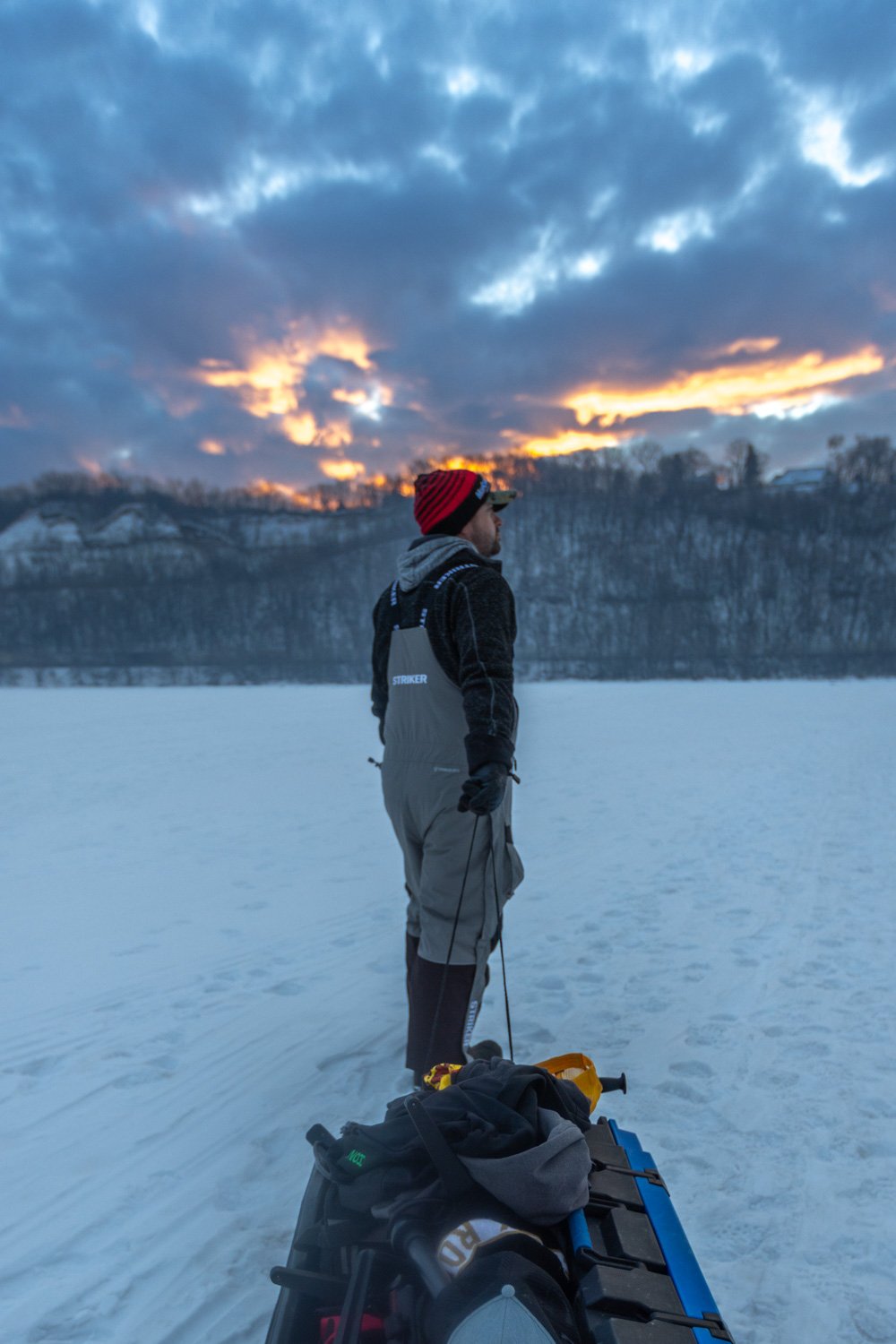It’s been a rough start to the ice fishing season. From a quick-freeze-up and false start for some parts of the ice belt, to nearly non-existent ice for much of the remainder, there’s no way to sugar-coat the whitecaps in January. While it has discouraged some anglers from getting ready for what ice will be had when it arrives at your local lake, I’ve taken it as an opportunity to review my gear as there’s little else to do for many of us. Not that shaving a few pounds is excuse to creep out on thin ice, but saving some weight keeps us nimble and after the fish, especially when hand-dragging so deep into what’s typically middle-winter conditions. Call it a first-ice mindset for what may be much more of the season than we intended, here’s how I look to keep it light out there.
Suits– In a year with record ice-rescues and constant reminders of the danger of ice, a float suit is pretty much standard-issue. Most ice outerwear these days floats anyway, so for anglers looking to upgrade, it’s more about comfort, warmth, and yes, weight. Higher end suits on the market currently don’t just serve the floatation, warmth, and organizational needs of ice-heads, they do it without feeling bulky or heavy.
Sled – If you’re using the old war-wagon you’ve always pulled, it might be time for an upgraded version. That goes for those of you using a red kid’s plastic sled too, as dumping your gear twice down the landing doesn’t have to happen. Again, modern versions offer walled sides and roto-molded construction that offer rigidity without all the weight. Look for versions that come with a rope and you’ll know it’s not the heavyweight editions meant to be towed by machine.
Shelters – Winter is cold, even in the warmest of seasons, so it’s still good to carry a shelter, but it might be time to look into a one-person or hub-style shanty. Hubs are great values, and a wonderful utilizer of space/weight. You get a great plenty fishable area, and they zip into a pouch tent-style, allowing you to carry in a car or other smaller vehicle with ease. If you’ve never fished in a hub-style shelter, this winter is a great reason to give them a try.
Auger – Hand-augers are tough to beat for saving pounds, but in mere days to weeks, synthetic drill adaptive augers will be the clear choice for shaving ice and weight. Even augers with a dedicated powerhead that’s synthetic will drop 4-6 lbs. from steel-bit versions. My experience is that they’ve been every bit as durable too, so there’s not a penalty for running synthetic except for initial investment.
Batteries – If you haven’t made the switch to Lithium yet, you’re missing out, and more importantly, carrying more weight than you need to. From a flasher battery to having power to light up your shelter, there’s the potential to save up to 5 pounds or more depending on the battery style you’re replacing. They come with more than just added mobility and comfort on ice too, as you’ll experience longer run-times and better reliability overall.
Heat – Here’s where a number of ice anglers still overload their sleds, starting with a 20 lb. propane cylinder. Now, there are re-fillable 1lb. cylinders which offer both cost savings over the long-haul, and the extra space afforded by only having to pack a handful of smaller cannisters for an evening fish. With everyone wearing modern fabrics inside of insulated shelters, the need for sunflower heaters of old has also faded. While their plastic and ceramic counterparts are a touch lighter, they can be less durable, so it's best to treat them kindly on the pull to and from your spots.
Accessories – As ice anglers, it’s often the extras that get us into trouble when it comes to weight. Additional electronics, fancy bait buckets, and heavy-duty rod cases don’t always have a place when it comes to first ice hand-hauling. Think minimalist to get the most from these early season fishes, knowing you’ll be cursing every ounce you overpack especially on the long hauls.
One heavy item I won’t do without is the ice chisel and other safety items that come with it. I’ve always got a throw rope and picks to go with my heavy-duty chisel for ice testing. In recent winters with poor ice formation, I’ve found bubble-holes and other small barely frozen spots that would certainly eat a truck and anything attached. That’s when surrounded by up to 16”es of ice or more. Just keep in mind that ice freezes inconsistently, and especially in a year like this one, it never hurts to chisel or drill extra holes just to monitor ice thickness. Drill a perimeter of known thicknesses and stay within it for maximum safety and you’ll been happy that your hyper-light gear stays dry.
